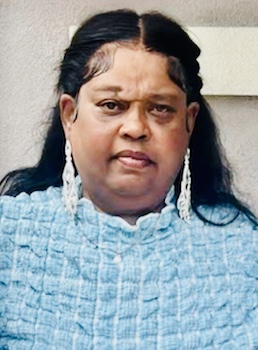The season of glorious fall grasses is approaching!
Published 8:40 pm Sunday, October 3, 2021
By Patricia Drackett
Director of the Crosby Arboretum and
assistant extension professor of landscape architecture with the Mississippi State University Extension Service
Over the past few weeks, you may have noticed subtle hints of an approaching explosion of native fall grasses along our Pearl River County roadsides. It will still be a while before the autumn light illuminates the unfolding inflorescences, but you can remain vigilant and prepare yourself for the glorious show. If you are lucky, and arise early, you may be treated to plumes with an extra sparkle, when they greet the day coated in morning dew.
On my short drive to work each day, I keep an eye on the variety of grasses that are developing, such as the emerging clusters of sugarcane plume grass (Saccharum giganteum), which here and there are currently sporting sparse fresh peachy-pink heads. Caught at precisely the right moment, they will remain decorative in arrangements for a year or more, as exemplified by the vase on my kitchen table, where they dance with bog buttons and other dried perennial flowerheads.
What I enjoy about the grass inflorescences is that once they have aged, they have a totally different appearance, and turn fluffy and white. For now, however, they glisten in the sun, and remind me that their season is approaching, and they will be providing a backdrop for the swamp sunflowers in our pitcher plant bog. Each vignette is like a separate Impressionistic painting, giving a flash of exquisite beauty on my highway beeline.
One striking grass species is called brushy bluestem (Andropogon glomeratus). These clusters are so incredibly dense right before they explode. The grass is called “bluestem” because of the bluish-green hue of its summer foliage. Another common species of Andropogon is known as broomsedge (Andropogon virginicus). In the winter months, the grasses develop a coppery color, and make an unforgettably attractive sight should the stems become dusted with snow.
Native Andropogon grasses are excellent for controlling erosion and are termed a “pioneer” species because they are among the first plants to appear on disturbed land. Found in moist to semi-moist sites, its seeds are consumed by birds and small mammals, and it attracts butterflies such as skippers and satyrs.
Toothache grass (Ctenium aromaticum) is an unusual grass found in coastal wet pine savannas, such as the Arboretum’s Savanna Exhibit. It is easily identified by its curved or spiraled inflorescences. As the name implies, chewing on the lower portions of the stems of this grass stems results in a numbing sensation to the mouth. Lore is that it provided welcome relief to early settlers who were suffering a toothache.
One late-season native stunner that makes a great addition to your garden is Muhly grass (Muhlenbergia capillaris), known as Gulf muhly or hair grass. It has breathtakingly beautiful, feathery pink spikes appearing in October. If you visit the Mississippi State University campus in Starkville this fall, stop by the Veterans Memorial Rose Garden on Highway 182 at the entrance to the R. Rodney Foil Plant Science Research Facility to see some gorgeous masses of this grass, which lines the pathways into the garden.
Muhly grass is found growing in dry, sandy, and exposed sites, and in wet savannas and marshes, making it a good choice for a site with poor soils, or for your meadow or xeriscape garden. Use it in combination with perennials having flat-topped blooms, such as black-eyed Susan, purple coneflower, or swamp sunflower for a “designer look”. It is tolerant of salt spray and also to deer browsing.
Join Dr. Juan Mata from the University of South Alabama for a mushroom walk of the Arboretum grounds on Saturday, October 9, from 10:00 a.m. to Noon. Learn about fungi’s fascinating ecology, taxonomy, and relationship to mankind. Come dressed for being outdoors. A knife, gloves, basket or bag are helpful, but not necessary. Registration is required and class size is limited. Cost is $4 for members and $7 for non-members.
In the afternoon of Saturday, October 9, attend a gentle yoga class and short meditation sitting from 1:00 to 2:30 p.m. with certified yoga instructor James Sones in the beautiful natural setting of Pinecote Pavilion. Bring your yoga mat, and please arrive 10 minutes early. Reservations are required, and the class is limited to 16 persons. Members $2, non-members $5.
Sign up now for “Common Butterflies to Mississippi and their Host Plants” with Pearl River County Coordinator and Extension Agent Dr. Eddie Smith on Friday, October 16 from 10:00 to 11:00 a.m., free to Arboretum members and $5 for non-members. Reservations required. Please call the office at 601-799-2311 to sign up.
The Arboretum is located at 370 Ridge Road, at Exit 4, Picayune, and open Wednesday through Sunday from 8:00 p.m. to 4:30 p.m. For more information see www.crosbyarboretum.msstate.edu<http://www.crosbyarboretum.msstate.edu>.










